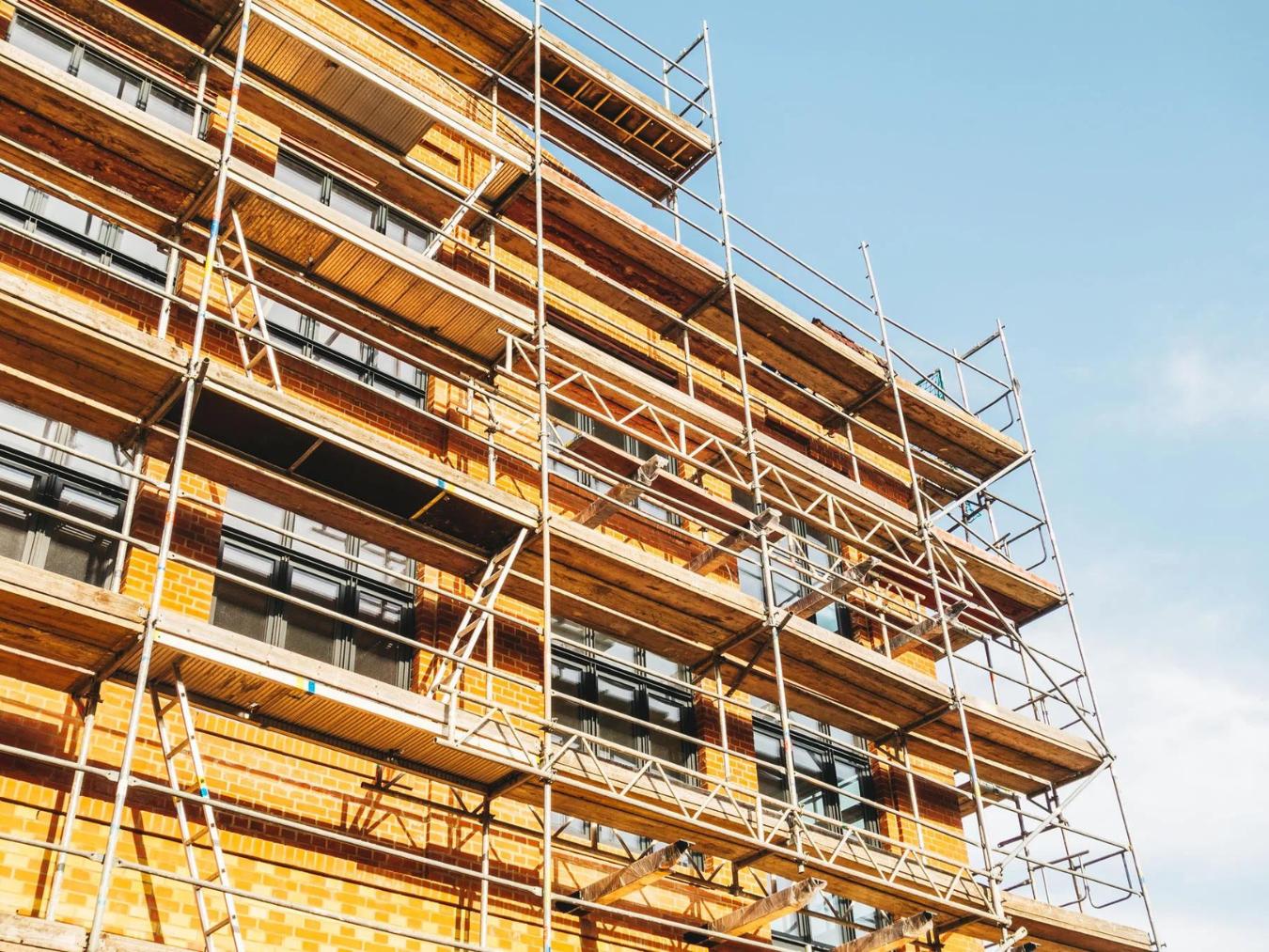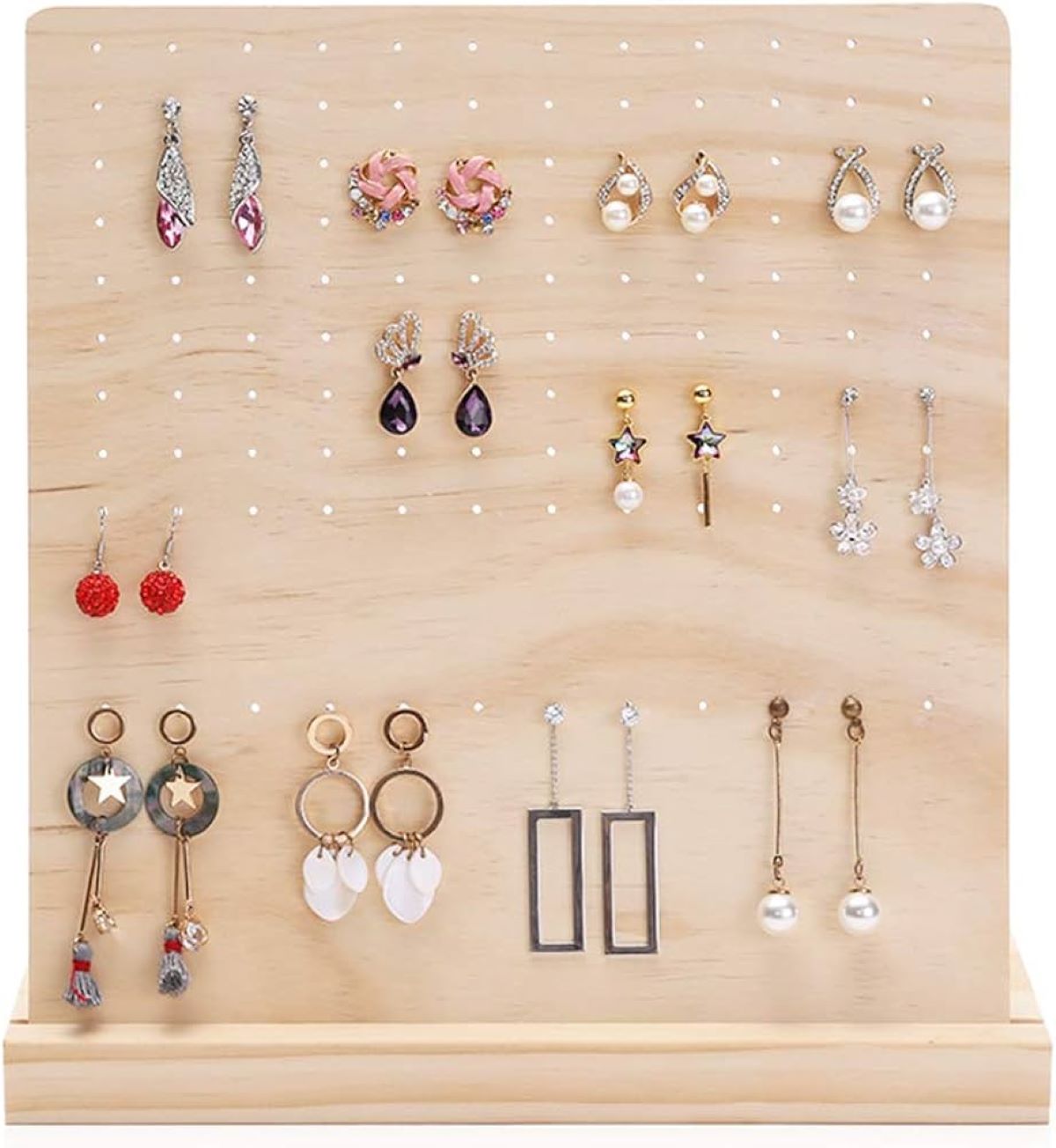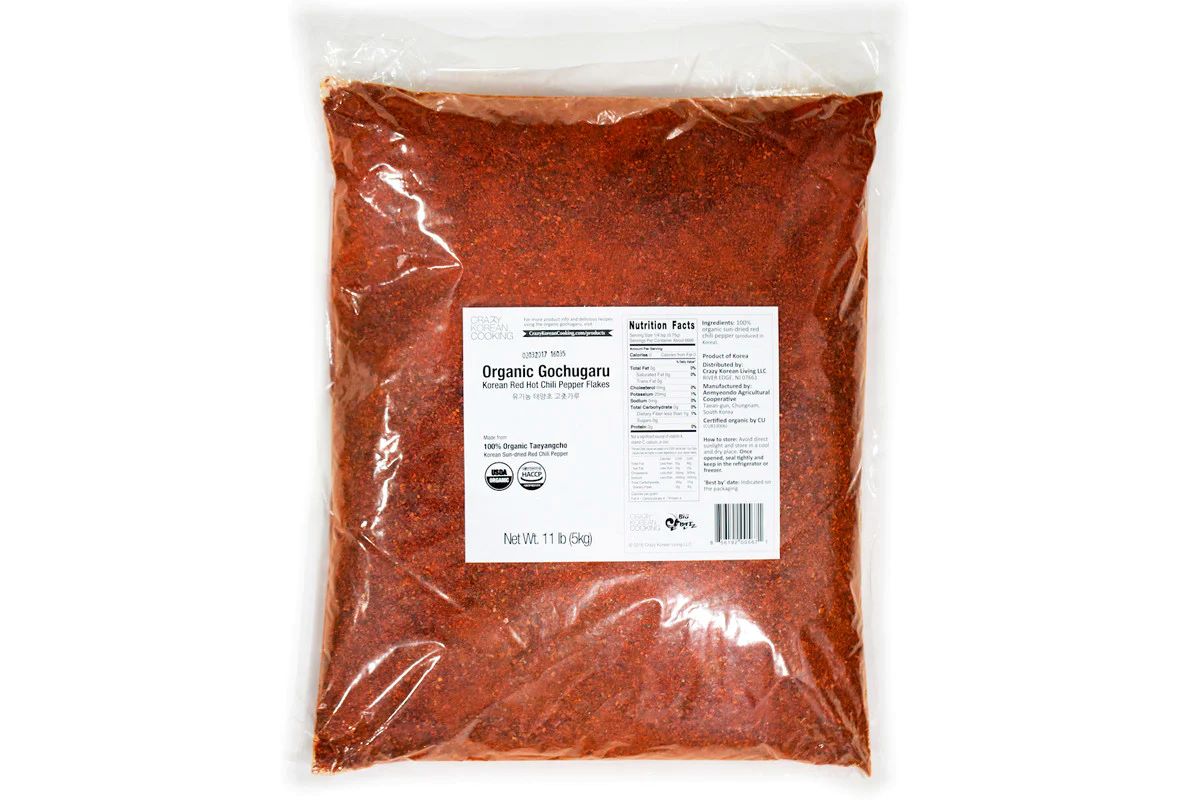

Articles
How To Store Scaffolding
Modified: December 7, 2023
Learn effective ways to store scaffolding and keep it organized with our informative articles. Browse our collection of helpful tips and suggestions.
(Many of the links in this article redirect to a specific reviewed product. Your purchase of these products through affiliate links helps to generate commission for Storables.com, at no extra cost. Learn more)
Introduction
When it comes to construction projects, scaffolding plays a crucial role in providing a safe and secure working platform for workers. However, once a construction project is completed, the scaffolding needs to be properly stored to ensure its longevity and usability for future projects. Storing scaffolding correctly not only saves time and money by avoiding potential damage or deterioration, but it also ensures the safety of workers when the scaffolding is reused.
In this article, we will explore the essential factors to consider before storing scaffolding, provide tips for proper cleaning and maintenance, discuss the selection of the right storage location, and offer advice on dismantling and organizing scaffolding components. Additionally, we will delve into the importance of storing scaffolding in a safe and secure manner, emphasize the need for regular inspection and maintenance of stored scaffolding, and ensure it is always ready for use whenever needed.
By following these guidelines, you will be able to store scaffolding efficiently and effectively, prolonging its lifespan, and maximizing its value. So, let’s dive in and discover how to properly store scaffolding.
Key Takeaways:
- Properly storing scaffolding is essential for its longevity, usability, and the safety of workers in future construction projects. Consider factors such as condition assessment, documentation, compliance with regulations, and accessibility to make informed storage decisions.
- Regular inspection, maintenance, and proper organization of scaffolding components are crucial for ensuring its safety and reliability for future use. Selecting the right storage location, whether indoor or outdoor, and following guidelines for safe and secure storage are essential for maintaining the integrity of the scaffolding.
Read more: What Is Scaffolding Construction
Factors to consider before storing scaffolding
Before you begin the process of storing scaffolding, there are several important factors to consider. These factors will ensure that the scaffolding is stored properly and can be used safely in future projects. Let’s take a look at these factors:
- Assessment of condition: Before storing the scaffolding, it’s crucial to assess its condition. Inspect each component for any damage or wear and tear that may affect its stability or structural integrity. Identify any bent frames, rusted parts, missing pins, or damaged platforms. It’s essential to address these issues before storing the scaffolding to prevent further damage or accidents during future use.
- Documentation and inventory: Maintain accurate documentation of the scaffolding components and create an inventory list. This list should include the number of frames, braces, platforms, guardrails, and any other accessories. This documentation will help you keep track of the inventory, assist in future planning, and identify any missing or damaged components before reusing the scaffolding.
- Compliance with regulations: Ensure that the scaffolding complies with safety regulations and industry standards. Familiarize yourself with the local and national guidelines regarding scaffolding storage to ensure you are following all necessary safety protocols. This includes proper labeling, handling, and storage practices.
- Consideration of weight and dimensions: Take into account the weight and dimensions of the scaffolding components when selecting a storage location. The storage area should be able to accommodate the size and weight of the scaffolding without risking damage or creating a safety hazard. Consider the load-bearing capacity of the storage area and ensure it is suitable for supporting the weight of the scaffolding.
- Accessibility: Choose a storage location that provides easy accessibility to the scaffolding components. This will make it convenient to retrieve the scaffolding when needed for future projects. Consider the proximity to the construction site or the ease of transportation, ensuring that the stored scaffolding can be quickly and safely transported to the project site when required.
By carefully considering these factors, you can ensure the proper storage of your scaffolding, maintaining its integrity and ensuring its safety for use in future construction projects. Now that we have explored the factors to consider, let’s move on to the next crucial step in storing scaffolding: cleaning and maintenance.
Proper cleaning and maintenance of scaffolding
To ensure the longevity and usability of scaffolding, proper cleaning and maintenance are essential. By following these cleaning and maintenance practices, you can keep your scaffolding in excellent condition and prevent any potential issues that may arise due to neglect. Here are some guidelines for proper cleaning and maintenance:
- Inspect for debris: Before cleaning the scaffolding, carefully inspect all components for any debris, such as dirt, dust, or construction materials. Remove any loose debris using a broom or brush.
- Use a mild detergent: Prepare a solution of mild detergent and water. Dip a soft-bristle brush into the detergent solution and scrub the scaffolding components to remove any stubborn dirt or stains. Pay special attention to areas that are prone to accumulation, such as joints and corners. Avoid using abrasive cleaners or tools that may damage the scaffolding material.
- Rinse with clean water: After scrubbing, rinse the scaffolding components thoroughly with clean water to remove any residue from the detergent solution. Use a hose or buckets of clean water to ensure all surfaces are rinsed properly.
- Dry the scaffolding: Allow the scaffolding components to dry completely before storing them. This will prevent the formation of mold or corrosion caused by moisture. If necessary, use clean towels or cloths to dry the surfaces of the scaffolding components.
- Inspect for damage: While cleaning the scaffolding, take the opportunity to inspect each component for any signs of damage. Look for cracks, rust, bent frames, or loose connections. Address any issues immediately to prevent further damage or accidents during future use of the scaffolding.
- Apply protective coating: Consider applying a protective coating, such as paint or anti-corrosion spray, to the scaffolding components. This will help to prevent rust and corrosion, especially if the scaffolding will be stored in an outdoor or humid environment. Follow the manufacturer’s instructions for applying the protective coating.
By regularly cleaning and maintaining your scaffolding, you can prolong its lifespan and ensure its safety and usability for future construction projects. Now that we have covered cleaning and maintenance, let’s discuss the selection of the right storage location for your scaffolding.
Selecting the right storage location
Choosing the right storage location for your scaffolding is crucial to ensure its safety and longevity. The storage location should provide adequate protection from weather elements, secure storage space, and easy accessibility. Here are some key considerations when selecting the right storage location for your scaffolding:
- Indoor vs. outdoor storage: If possible, opt for indoor storage for your scaffolding. Indoor storage provides better protection from weather elements such as rain, snow, and extreme temperatures, which can cause corrosion and deterioration of the scaffolding components. If indoor storage is not available, consider using weather-resistant covers to protect the scaffolding when stored outdoors.
- Security measures: Ensure that the storage location is secure and protected against theft or unauthorized access. Ideally, the storage area should have proper fencing, lockable gates, and security cameras to deter any potential intruders. This will help to safeguard your scaffolding and ensure that it is available when you need it for future projects.
- Proper ventilation: If the storage area is indoors, make sure there is proper ventilation to prevent the accumulation of moisture, which can lead to mold or corrosion. Good airflow will help to keep the scaffolding components dry and in optimal condition.
- Ample space: The storage area should have enough space to accommodate the size and quantity of your scaffolding. Ensure that there is ample room to organize and stack the components in an orderly manner, without any risk of toppling or damage. Consider vertical storage options, such as racks or shelves, to maximize the use of space.
- Accessibility: Choose a storage location that offers easy accessibility to the scaffolding components. This will save time and effort when retrieving the scaffolding for future projects. If the storage location is in a different facility or site, consider the transportation logistics and ensure that it is convenient to transport the scaffolding to the project site when needed.
- Consider climate: Take into account the climate of the storage location. Ensure that the storage area is not prone to excessive humidity or extreme temperature fluctuations, as these conditions can negatively impact the scaffolding components. If necessary, consider using dehumidifiers or climate control systems to maintain optimal storage conditions.
By carefully considering these factors, you can select the right storage location for your scaffolding, ensuring its safety and preserving its quality for future use. Now that we have discussed the selection of the storage location, let’s move on to dismantling and organizing the scaffolding components for storage.
When storing scaffolding, make sure to disassemble it properly and store it in a dry, secure location to prevent rust and damage. Keep all parts organized and labeled for easy reassembly.
Tips for dismantling and organizing scaffolding components
Properly dismantling and organizing your scaffolding components is crucial for efficient storage and future use. Following these tips will help you streamline the dismantling process and ensure that the components are organized and ready for storage:
- Plan the dismantling process: Before you start dismantling the scaffolding, create a dismantling plan. Identify the sequence in which the components should be disassembled to ensure a smooth and systematic process. This will help avoid confusion and save time during the dismantling process.
- Use proper tools and equipment: Make sure you have the necessary tools and equipment to dismantle the scaffolding safely and efficiently. This may include wrenches, hammers, screwdrivers, and scaffolding-specific tools. Using the right tools will make the dismantling process easier and minimize the risk of damage to the components.
- Label and organize components: As you dismantle the scaffolding, label each component for easy identification during the storage and reassembly process. Use waterproof and durable labels that won’t fade or become illegible over time. Keep similar components together and organize them in a systematic manner, such as grouping frames, braces, platforms, and accessories separately.
- Secure small components: For smaller scaffolding components such as pins, clips, and connectors, place them in separate containers or bags. This will prevent them from getting lost or mixed up with larger components. Label these containers accordingly and store them with the rest of the scaffolding components.
- Protective padding: Consider using protective padding or foam inserts to prevent any contact or friction between the scaffolding components during storage. This will help minimize the risk of scratches or damage to the surfaces. Wrap delicate or fragile components, such as wooden platforms, with appropriate protective materials before storing them.
- Stacking and stability: When organizing the scaffolding components in the storage area, ensure that they are stacked securely and in a stable manner. Start with the larger and heavier components as the base and stack lighter components on top. Avoid stacking components too high to prevent any potential collapse or instability.
- Clear labels and inventory management: Clearly label each stack of scaffolding components with the corresponding inventory numbers and descriptions. This will make it easier to locate specific components when needed and maintain accurate inventory management. Regularly update your inventory list as components are added or removed.
By following these tips, you can effectively dismantle and organize your scaffolding components for storage. This will facilitate easy retrieval and reassembly when you need to use the scaffolding in future construction projects. Now, let’s move on to the next crucial aspect of storing scaffolding: ensuring it is kept in a safe and secure manner.
Read more: What Is A Ladder Jack Scaffold
Storing scaffolding in a safe and secure manner
Proper storage of scaffolding is essential to ensure its safety and longevity. By following these guidelines, you can store your scaffolding in a safe and secure manner:
- Secure storage area: Ensure that the storage area is secure and protected against theft or unauthorized access. Use lockable doors and windows, security cameras, and proper lighting to deter potential intruders.
- Stable and level surface: The storage area should provide a stable and level surface for the scaffolding components. Uneven surfaces can lead to instability and potential accidents. Consider using pallets or wooden platforms to elevate the scaffolding off the ground.
- Proper stacking: Stack the scaffolding components in a stable and organized manner. Keep similar components together, such as frames, braces, platforms, and accessories. Avoid stacking too high to prevent the risk of collapse. Use appropriate support structures, such as racks or shelves, to securely stack the scaffolding components.
- Weather protection: If storing the scaffolding outdoors, use weather-resistant covers to protect the components from rain, snow, and sunlight. Moisture and prolonged exposure to sunlight can cause rust, corrosion, and deterioration of the scaffolding material. Ensure the covers are tightly secured to prevent damage from strong winds.
- Separation of components: Store different types of scaffolding components separately to prevent any damage or deformation. Avoid placing heavy items on top of delicate components and ensure there is enough space between stacks to avoid any pressure or impact during storage.
- Regular inspections: Regularly inspect the stored scaffolding for any signs of damage, including rust, bent frames, or loose connections. Address any issues immediately to prevent further deterioration or accidents during future use. Keep a log of inspection dates and findings to ensure continuous monitoring of the scaffolding’s condition.
- Documentation: Maintain accurate documentation of the stored scaffolding, including inventory lists, inspection records, and any repairs or maintenance performed. This documentation will help ensure proper management of the scaffolding and assist in future planning and usage.
- Restricted access: Limit access to the stored scaffolding to authorized personnel only. Properly communicate and enforce access restrictions to prevent any mishandling or unauthorized use of the scaffolding. This will contribute to the overall safety and security of the stored scaffolding.
By following these guidelines, you can ensure that your scaffolding is stored in a safe and secure manner. This will help maintain the integrity and usability of the scaffolding for future construction projects. Now, let’s move on to the importance of regular inspection and maintenance of stored scaffolding.
Regular inspection and maintenance of stored scaffolding
Regular inspection and maintenance of stored scaffolding are vital to ensure its continued safety and reliability for future use. By implementing a systematic inspection and maintenance routine, you can identify and address any issues promptly, prolonging the lifespan of the scaffolding and minimizing the risk of accidents. Here are some key points to consider:
- Scheduled inspections: Establish a schedule for regular inspections of the stored scaffolding. This can be monthly, quarterly, or biannually, depending on the frequency of use and the storage conditions. Stick to the schedule and assign responsible personnel to conduct thorough inspections.
- Visual inspection: Start with a visual inspection of all components. Look for any signs of damage, such as cracks, rust, or bent frames. Pay attention to connections, pins, and fasteners for any signs of wear or looseness. Ensure that labeling and inventory records are accurate and up-to-date.
- Load-bearing components: Focus on load-bearing components, such as frames, braces, and platforms. Check for any deformities or structural issues that may compromise their stability. Inspect wooden platforms for decay or splintering, and replace them if necessary. Verify the load capacity of the components and ensure it matches the project requirements.
- Corrosion prevention: Check for any signs of corrosion, especially in outdoor storage environments or in regions with high humidity. Treat any corroded areas with appropriate anti-corrosion solutions and repaint if necessary. Regularly clean and oil any moving parts, such as hinges or locks, to prevent rust buildup.
- Tensioning and connections: Inspect the tensioning of the scaffold’s components, including couplers, connectors, and joints. Ensure that all connections are secure and tight. Replace any damaged or missing pins, clips, or fasteners. Pay special attention to adjustable components, such as telescopic braces, to ensure they can be locked securely in place.
- Documentation and record-keeping: Document the inspection findings, including any repairs or maintenance performed. This will help track the history of the scaffolding and provide valuable information for future planning and usage. Maintain detailed records of inspections, repairs, and replacements.
- Repairs and replacements: Address any issues identified during the inspection promptly. Repair or replace damaged components to ensure the scaffolding’s safety and integrity. Use genuine manufacturer’s parts or consult with a scaffolding expert to ensure compatibility and compliance with safety standards.
- Training and education: Provide training and education to personnel involved in the inspection and maintenance process. Familiarize them with industry standards and guidelines, and equip them with the necessary knowledge and skills to identify potential hazards or issues during inspections. Regularly update their training to stay informed about new developments in scaffolding maintenance.
By conducting regular inspections and performing necessary maintenance, you can ensure that the stored scaffolding remains safe and functional for future construction projects. Now, let’s conclude our discussion on how to properly store scaffolding.
Conclusion
Properly storing scaffolding is crucial for its longevity, usability, and the safety of workers in future construction projects. By considering factors such as the scaffolding’s condition, documentation, compliance with regulations, weight and dimensions, and accessibility, you can make informed decisions when it comes to storage.
Cleaning and maintaining the scaffolding components ensures their durability and usability. Regular inspections, proper labeling, and organization of components make it easier to retrieve and reassemble the scaffolding when needed. Selecting the right storage location, whether indoor or outdoor, secure and well-ventilated, further protects the scaffolding from weather elements and unauthorized access.
Regularly inspecting the stored scaffolding and addressing any issues promptly helps maintain its safety and reliability. Documentation of inspections, repairs, and replacements aids in record-keeping and efficient management of the scaffolding inventory. By following these guidelines, you can store your scaffolding in a safe and secure manner and ensure it remains in optimal condition for future construction projects.
Remember, proper storage of scaffolding not only saves time and money by avoiding potential damage or deterioration, but it also promotes the safety and well-being of workers. So, take the necessary steps to store your scaffolding correctly and reap the benefits of a well-maintained and efficient construction equipment inventory.
Frequently Asked Questions about How To Store Scaffolding
Was this page helpful?
At Storables.com, we guarantee accurate and reliable information. Our content, validated by Expert Board Contributors, is crafted following stringent Editorial Policies. We're committed to providing you with well-researched, expert-backed insights for all your informational needs.















0 thoughts on “How To Store Scaffolding”